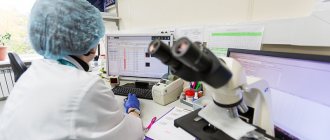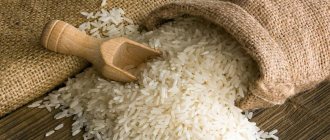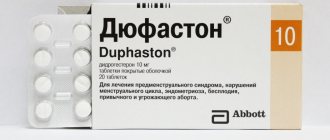In this article we will tell you:
- 11 beneficial properties of protein for the human body
- Animal protein sources
- Best Sources of Plant Protein
- Daily intake of proteins, fats and carbohydrates
- Time for protein absorption in the body
- 3 reasons why protein is poorly absorbed
- The effect of protein on human satiety control
- The role of protein in weight loss
- No less serious consequences of excess protein
- The benefits and harms of high protein diets
- Benefits of Protein Shakes
- 3 types of protein shakes
- Toxins in protein shakes
- Contraindications and rules of admission
Squirrels
- organic molecules consisting of long chains of amino acids and performing a number of vital functions. They enter the body with food (mainly meat, fish, legumes and milk), and are also synthesized in the multifunctional liver factory.
In the realities of the modern world and, taking into account the increasing frequency of genetic mutations and disorders of enzyme systems, the issue of protein digestibility is especially acute: many patients have been in severe deficiency for years, arising not so much due to the lack of protein in the diet, but due to violations of its breakdown ( for example, due to decreased secretion of hydrochloric acid) and subsequent absorption.
Animal protein sources
- Protein content in meat
| Product type | Protein content (per 100 g) |
| Turkey | 21-22 |
| Chicken | 20-21 |
| Beef | 19 |
| Mutton | 16 |
| Pork | 11-16 |
A lot of protein is found in beef, rabbit and poultry. This protein is good for any cooking method, with the exception of frying. In addition, pork has a lot of fat, so it is better not to abuse it. If you still prefer this kind of meat, then you should first cut off the fat from it. In this form the product will be more useful. A thorough inspection of the fibers and long-term heat treatment are also required: this is one of the meats most contaminated with eggs of parasitic worms.
The protein content of beef is much higher than that of pork. You should definitely include tongue, liver and other offal in your diet, as they contain many important microelements.
- Proteins in seafood and fish
| Fish and seafood | Content g/100 g |
| Pink salmon | 21 |
| Salmon | 20,8 |
| Squid, shrimp, mackerel | 18 |
| Herring | 17-18 |
| Crab, flounder, pollock | 16 |
| capelin | 13 |
The most protein is found in tuna, trout, salmon, herring, and flounder. Caviar is distinguished by an increased amount of amino acids. In this case, even the caviar of inexpensive varieties of fish, for example, capelin, is useful. In terms of the content of useful substances, it is no worse than that of sturgeon. When eating caviar, it is recommended to first store it at low temperatures in the freezer: this way, the risks of helminth infestation are significantly reduced.
- Dairy proteins
| Dairy | Content g/100 g |
| Cheese | 20-27 |
| Cottage cheese | 14-18 |
| Yogurt | 5 |
| Cream, kefir, sour cream | 2,8-3 |
| Milk | 2,8 |
The most milk protein is found in cheese, cottage cheese, milk and kefir. To absorb calcium, you need amino acids, which are found in abundance in these foods. Fermented milk products have a beneficial effect on the intestines - the bacteria they contain act as probiotics.
#1 Eat foods that combine with proteins
Products that are consumed simultaneously with animal protein can seriously affect its digestion and absorption by the body. Alas, these include products that are quite popular among healthy lifestyle enthusiasts, such as oatmeal, brown rice, legumes, and so on.
To the surprise of gym regulars, scientists have proven that they all include substances harmful to normal digestion - phytates . They are also called anti-nutrients.
What are phytates?
Phytates in their structure contain irritating compounds that bind to minerals and trace elements and interfere with their absorption in the gastrointestinal tract. Phytates cause many elements to simply not be absorbed. These include magnesium, iron, zinc. Phytates can also affect protein, resulting in a decrease in the effectiveness of digestive enzymes necessary for the normal absorption of food.
It should be noted that one serving of brown rice, oatmeal, or legumes is unlikely to completely inhibit nutrient absorption, but a typical meat eater will eat many more meals containing these foods than one serving each day.
You don’t have to worry too much about this, because below we will offer some practical tips, thanks to which minerals and proteins will be perfectly absorbed.
Replace brown rice with white
It is not necessary to opt for brown rice, because there is also white, that is, refined. At one time, Nate Miyaki wrote in The Perfect Carb for Lifters about the benefits of white rice. He called it the best source of energy for athletes and athletes. And it is the procedure of cleansing rice grains that allows you to get rid of all phytates , leaving the carbohydrate center intact and completely intact.
Thus, you have a valuable source of carbohydrates, which ideally replenishes glycogen stores after an intense workout and thereby helps the body recover in a timely manner.
Soak beans, nuts and oats
Make sure all beans, grains, nuts and seeds are properly prepared before eating. They contain many useful substances, but the presence of phytate in the products makes their suitability for effective absorption extremely low.
The necessary measure here is soaking foods (for example, you can soak nuts and oats). For example, at night. This will certainly reduce the content of unwanted phytates in them and help improve absorption.
Sprout seeds, grains and beans
Another action can be performed with seeds, grains and beans. In this case we are talking about their germination . As a result of this process, not only does their nutritional value increase , but the content of carotene, vitamins C and B also increases in the composition. This is fully true when talking about quinoa, which has an almost complete list of essential amino acids that become maximally available for digestion as a result of germination.
If you decide to start germinating seeds, we have prepared a special guide to microgreens for you. He will help you select and grow a certain variety of greens that will bring maximum benefit to your body.
Do not eat legumes unless they have been pre-cooked. According to research, soybeans have the highest percentage of phytates in their composition.
You can read more about phytates in a separate article. In it we revealed all the details of their effects on the body.
Eat foods rich in vitamin C
Always pay attention to the composition of the protein product you purchased at the store for food. Many companies like to include the lion's share of fillers at the expense of other nutrients. If the end result is that you consume a large amount of phytates in your food, include in your diet vegetables and fruits that are rich in vitamin C. Ascorbic acid can effectively counteract the effects of phytates and improve the absorption of beneficial nutrients.
Best Sources of Plant Protein
- Pumpkin seed protein
In terms of the amount of amino acids they contain, pumpkin seeds are almost equivalent to the ideal balance of animal protein in eggs. They contain a lot of lysine, phenylalanine and tryptophan - amino acids involved in the metabolism of neurotransmitters and in the formation of collagen fibers.
In addition, the seeds do not contain protease inhibitors - enzymes that break down bonds in the protein molecule. It is recommended to consume peeled seeds regularly.
- Amaranth protein
Amaranth contains twice as much protein as wheat. The huge content of tyrosine, tryptophan, threonine, phenylalanine brings it closer in amino acid composition to milk protein. The grain of this crop consists of 11-19% protein, so it can be used to easily compensate for deficiencies - especially for adherents of a plant-based diet.
- Cereal proteins
The most useful from this point of view are buckwheat, quinoa and oats. But in any case, cereal proteins do not have an ideal amino acid composition. Only buckwheat and oats are rich in lysine; buckwheat, as well as sorghum and rice, are rich in isoleucine. Wheat, barley, rye and sorghum have too little methionine, only 1.6 - 1.7 mg/100 g of protein. Wheat protein contains only 2.6% threonine, while corn contains too little tryptophan (0.6%).
In general, even with a combination of these cereals, covering the body’s daily protein needs is still a big question.
- Legume protein
Legume protein is very cheap and very popular. However, there is one important drawback: it contains protease inhibitors, which prevent the complete digestion of protein.
Pea protein is high in essential amino acids but not rich in sulfur-containing amino acids. For this reason, legume protein should be used in combination with other types of protein.
We recommend
“The benefits of water for the human body” Read more
Daily intake of proteins, fats and carbohydrates
Energy is spent daily on:
- basal metabolism;
- dynamic action of food;
- physical activity.
Optimal calorie content for different groups of people:
| 1600 kcal/day | Women leading a sedentary lifestyle, elderly people. |
| 2200 kcal/day | Women with high levels of physical activity; Men leading a sedentary lifestyle; Small children; teenage girls. |
| 2800 kcal/day | Men with high levels of physical activity; Women who play sports professionally; teenage boys. |
To calculate caloric intake for a specific person, it is necessary to take into account his gender, age, weight and height, as well as his level of daily physical activity.
Online calculators can be useful for calculations. Here's one option: https://caloriecontrol.org/healthy-weight-tool-kit/assessment-calculator/
An example of correct calorie counting:
How to distribute 1600 kilocalories over 3 main meals and one snack:
- Breakfast includes 25% kcal – 400 kcal.
- Lunch contains 35% kcal – 560 kcal.
- An afternoon snack is 10% of the daily diet - 160 kcal.
- Dinner is 25%, that is, 400 kcal.
However, we will not tire of repeating that the most universal and physiological is still 3 meals a day: ideally, you should completely forget about all snacks!
What is the Daily Macronutrient Value for Men and Women?
| women | men | |||
| 1600 kcal | 2200 kcal | 2200 kcal | 2800 kcal | |
| Carbohydrates | 45-65% from the daily norm | |||
| 3-5 g per 1 kg of body weight | ||||
| 225 g | 300 g | 300 g | 375 g | |
| Fats | 20-25% to 30% from the daily norm | |||
| 0.5 - 1 g per 1 kg of body weight | ||||
| 40 g | 65 g | 65 g | 95 g | |
| Squirrels | 10-20% from the daily norm | |||
| ~ 1-2 g per 1 kg of body weight | ||||
| 50 g | 100 g | 60 g | 150 g | |
It's pointless to count calories all the time - there's still more chance of getting a nervous breakdown than getting accurate numbers in the next popular app and, most importantly, fitting into them. During the cooking process, the calorie content of foods changes and cannot be reliably determined.
But it is still necessary to become familiar with the calorie content of food: to get an idea of what you are feeding your body.
Using a special formula, you can calculate your norm very easily. But before you do this, you should remember that:
- the norm takes into account both animal and vegetable protein;
- Too little protein is less harmful than too much protein.
Many people make the mistake of considering themselves an extremely active person. In fact, most people lead a sedentary lifestyle. If you're in this category, but you're getting the amount of protein you need for an active person, you're at risk of gaining weight due to excess calories.
#3 Increase the amount of hydrochloric acid
Many have a negative attitude towards gastric juice and hydrochloric acid, considering it the source of all ills, including heartburn and stomach diseases.
And here you can make a mistake. According to medical statistics, the vast majority of people suffering from heartburn suffer from a lack of production of hydrochloric acid with gastric juice at the initial stage of digestion. Therefore, acid is produced in excess when food has already entered the stomach.
Hydrochloric acid plays an important role in the digestion of protein, which is consumed in food and remains in the stomach for a certain amount of time until it reaches the duodenum and then the small intestine.
At the physiological level, the small intestine accounts for up to 90% of the digestive function when it comes to the absorption of nutrients. But digestion here will not be effective unless the food has first been exposed to hydrochloric acid in the stomach. Without a sufficient amount of it, most of the protein simply will not be absorbed. There will also be a risk of damage to the intestinal wall.
If your doctor does not mind, it is recommended to avoid regular use of antacids , which can interfere with the normal absorption of protein, worsening the quality of the digestion process. If heartburn bothers you and discomfort occurs, you can wait 15 minutes after eating and then go for a walk for 20 minutes. Scientists have proven that this leads to faster gastric emptying and the disappearance of pain.
Time for protein absorption in the body
Surely, you are familiar with the recommendation to consume no more than 30-40 g of protein per meal. Those who give such advice explain this by saying that the body simply cannot absorb more protein. However, this is a misconception. It is unlikely that the digestive system of both an athlete and a fragile girl is capable of breaking down and absorbing the same amount of protein.
We recommend
“Common types of diets in nutritionology and their descriptions” Read more
In addition, some people eat only one meal a day. It turns out that with a norm of 30-40 g of protein, a person with a high need for proteins would soon experience protein deficiency. To test this statement, an experiment was conducted. One group of subjects ate one meal a day, and the other three. The researchers then compared how the protein was absorbed in people. The results were the same.
Thus, it was reliably confirmed: all the protein that a person consumes in one meal is completely absorbed. The only question is how long it will take for digestion - it all depends on the activity of enzymatic systems and the adequacy of the secretion of digestive juices, as well as on the type of food received.
The human body controls the rate at which protein passes through the small intestine. This time is necessary for transporter cells to distribute amino acids to all tissues and organs.
The effect of protein on human satiety control
Scientists have noticed that some animals begin to behave differently due to fluctuations in protein in their diet. This is the so-called protein lever hypothesis. Its meaning is that our smaller brothers first try to fill the body with protein, and only then load up on carbohydrates and fats. Thus, they control overeating as protein reduces hunger.
Macronutrient fluctuations were described using a mathematical model. She proved that different people around the world consume protein within 10-15%, but the proportions of fat and carbohydrates are very different. Our hunter-gatherer ancestors ate high-protein foods, which made up 20-30% of their total diet.
Many people believe that to lose weight and maintain weight, you just need to increase your protein intake. However, scientists have conducted a number of studies and found that the diet of overweight people contains almost the same amount of protein as thin people. Thus, weight loss is influenced not so much by increasing protein, but by reducing the amount of foods with a high glycemic index. In addition, it has been proven that long-term protein diets lead to health problems.
At the same time, the positive effect of proteins on the human body cannot be denied. Protein perfectly saturates the body and helps control hunger. How to use this property of protein leverage wisely?
- The right food. It is better to give preference to whole foods containing protein and not to abuse their combinations with fats and carbohydrates (for example, eating potatoes and meat together). Because in this case, in order to gain the protein norm, you will have to eat too many carbohydrates and fats “for company.”
- Protein for breakfast. This method is guaranteed to reduce appetite during the day by 51%. The first meal with a high protein content is justified and even recommended for everyone who is concerned about and monitors their figure and body quality in general.
- It is recommended to start any meal with protein. I immediately remember the ancient expression “Ab ovo”, which translated means “let's start with an egg.” Protein at the beginning of your meal, like a vegetable salad, helps reduce the number of calories you consume.
- On days when you have a strong appetite, eat plenty of protein. And during periods of rest, reduce its amount by taking a break.
Protein digestion time table
11/30/2017 Manufacturers of protein shakes offer modern people a large selection of high-protein mixtures. Each person must choose a product that suits them optimally. Protein is selected according to several parameters. We discard all the additives, and all that remains is to determine the percentage of carbohydrates and fats in the product.
The next step is to decide for what purpose you are going to use high-protein mixtures. The modern protein shake has several varieties.
Whey Protein
.
· Has a maximum absorption rate compared to other products. In addition, a quarter of it consists of BCAA amino acids. This allows you to use this type of protein after training, when muscles need building material for recovery. The purer the whey, the higher its cost.
Whey protein isolate.
· Considered the purest protein whey. It contains virtually no fat and carbohydrates, but is also more expensive. If you are trying to avoid excess carbohydrates or are at the cutting stage, then this product is irreplaceable.
Protein hydrolysate.
· Includes a larger number of protein fractions that are broken down into smaller components. This ensures faster absorption of the product and the supply of proteins to the muscles. Hydrolysis protein is taken after training, but it is not a cheap pleasure.
Complex protein.
· It differs favorably from all proteins, as it is a universal protein due to the content of different types of protein. Typically, these proteins have different absorption rates - low, medium and high. Therefore, such proteins have a prolonged effect. Taking these proteins will give your body a continuous flow of essential amino acids for recovery and muscle gain.
Casein protein.
· Absorbed by the body gradually. It takes approximately 6 hours for the mixture to be absorbed. Consequently, during this time the body receives the protein it needs. If the body does not receive protein, then it begins to take it from the muscles, replacing it with fat. When it is necessary to increase the protein content in the diet, casein protein becomes the optimal solution.
Egg white.
· Made from egg white. It is usually included in products, but is rarely found as an independent component.
Soy protein.
· A number of studies indicate that soy protein isolate affects the production of thyroid hormones in humans. Ideal for vegetarian diets.
Plant protein.
· Very popular with vegetarians. It contains amino acids in sufficient quantities to support the development of the body as a whole.
Ready-to-eat protein.
· For people who do not have time to prepare protein shakes. But they need an additional source of protein. Available in different types and packaging: tetra packs, bottles, and there is also pudding in the form of a gel.
Protein digestion time table.
· 2-3 hours: egg white, ultra filtered whey protein concentrate, microfiltered whey protein isolate.
· 4-6 hours: milk protein concentrate.
· 6-8 hours: calcium caseinate, micellar alpha and beta casein and caseinates.
The role of protein in weight loss
Metabolic rate is the amount of basal metabolism per unit of time. What is basal metabolic rate? This is the amount of energy that the body spends to maintain its vital functions.
Researchers claim that increasing protein affects basal metabolic rate by speeding up metabolism. So for a person who is on a protein diet, in which 26% of calories come from protein, this figure increases significantly.
That is, if we need to lose weight, then there should be more protein. For example, our protein norm is 15% of the total calorie intake. To lose weight you need to increase this amount to 25-30%.
What happens if the percentage of protein is made extremely high (with a significant reduction in carbohydrates and fats), as recommended by followers of the Kremlin diet or the Dukan diet?
Such an extreme way to lose weight will lead to a real disaster, and will negatively affect the functioning of the kidneys - even to the development of kidney failure.
Excessive amounts of animal protein also increases blood cholesterol levels. Lack of plant foods harms the body. After all, the healthy fats contained in it protect the cardiovascular system.
Due to the low carbohydrate content, which is necessary for brain and muscle function, the amount of ketone bodies in the blood increases. Signs of this dangerous process are weakness, lack of strength, bad breath, insomnia, and bad mood.
What conclusion can be drawn from this? There must be moderation in everything!
Digestion and absorption of proteins
About n-number of proteins are supplied with food per day. Digestion of proteins is carried out by proteolytic enzymes of gastric pancreatic and intestinal juices.
The breakdown of food proteins begins in the stomach cavity under the influence of gastric juice. Gastric juice contains the enzyme pepsin. First, pepsin is activated and the active center opens in its predecessor, pepsinogen. This activation mechanism is called autocatalysis. The formation of an active center in the stomach cavity prevents the undesirable effects of this enzyme on the proteins of the stomach cells where its formation occurs. Mucin, which covers the surface of the digestive tract with a protective layer, is resistant to the action of pepsin.
Under the influence of pepsin in food proteins, peptide bonds located deep in the molecules are broken down. As a result of this action of pepsin, protein molecules are converted into a mixture of polypeptides of various lengths, which is sometimes called peptone. Thermal processing of food causes protein denaturation, that is, a change in the spatial shape of the protein molecule. This makes internal peptide bonds more accessible to pepsin and other proteolytic enzymes.
Gastric juice also contains hydrochloric acid. It also promotes the activation of pepsin. In addition, it creates a strongly acidic environment optimal for pepsin action. Hydrochloric acid also causes denaturation of food proteins, which facilitates the action of pepsin. Finally, hydrochloric acid has a bactericidal effect and neutralizes food from microorganisms.
Further digestion of proteins occurs in the small intestine. From the stomach comes a polypeptide mixture consisting of fragments of different sizes and lengths. In the small intestine, this mixture is first exposed to the action of pancreatic enzymes (trypsin, chymotrypsin, elastase). These enzymes break down polypeptides that enter the intestines into di- and tripeptides. Moreover, elastase breaks down strong proteins - collagen and elastin. Thus, oligopeptides arise.
Digestion of proteins is completed in the small intestine under the action of intestinal juice enzymes. These enzymes are embedded in the walls of microvilli and are secreted into the intestinal cavity. There are two types of digestion: parietal and cavity.
Amino acids arising on the surface of microvilli are immediately absorbed into the blood. A small part of amino acids is absorbed into the lymphatic system. The absorption of amino acids is an active process, involving the expenditure of ATP.
No less serious consequences of excess protein
What is the effect of proteins on the human body when consumed in large quantities?
- Calcium is removed from the bones in the urine.
- Osteoporosis develops.
- Nephrons are destroyed.
- It is necessary to increase the intake of vitamins and microelements.
- Gout appears.
- Children enter puberty early.
- The immune system weakens.
- The risk of getting cancer (breast cancer, colon cancer, prostate or pancreatic cancer) increases.
- Excess weight appears (animal protein often contains a lot of fat).
The benefits and harms of high protein diets
Of course, a protein diet has its strengths. With the help of protein, you can easily control the hormones of satiety and hunger (ghrelin, GIP, GLP-1) and thereby achieve weight loss. Also, high protein content in the diet helps control muscle mass and increase thermogenesis. But you need to keep in mind that the Western diet, combined with a large amount of protein, can also lead to metabolic disorders. In addition, it is alarming that there is still controversy regarding the insulin sensitivity of a person who eats a lot of meat to the detriment of plant foods.
Various experiments were carried out, but all the data obtained were quite contradictory. Some experts claim that protein diets increase sensitivity to insulin, which means they make a person lose weight. Others say insulin sensitivity decreases.
The research, as you can see, is quite mixed:
- Insulin sensitivity increases
. To prevent diabetes mellitus, as well as its treatment, it is recommended to eat 1.2-1.5 grams of protein per 1 kg of body weight per day. But other recommendations should also be followed: reduce the amount of carbohydrates, increase physical activity, and use nutritional supplements.
- Insulin sensitivity remains the same
. Other studies suggest this.
- Insulin sensitivity decreases
. In one of the experiments, 2 groups of people were compared. One consumed 0.8 g of protein per 1 kg of body weight, and the second - 1.2 g of protein. The number of calories was the same. It turned out that in the second group, insulin sensitivity became lower.
A high-protein diet reduced the rate of muscle loss by 45% but did not reduce oxidative stress. There were also no other benefits in this group that were seen in people who ate less protein. The differences in the impact of both diets can be seen in the picture below:
Another study was conducted with patients with diabetes. They were divided into two groups: in the first group, 40% of calories were covered by carbohydrates, and 30% by protein, and in the second, carbohydrates and protein accounted for 55% and 15%, respectively. In group number 1, no changes were observed. In the participants of the second half, the content of glucose and glycated hemoglobin in the body decreased, and sensitivity to insulin increased.
Other experiments have confirmed that high-protein diets speed up metabolism and reduce the risk of cardiovascular disease, but also cause insulin sensitivity to be about 19% lower. Researchers say there's nothing wrong with this because it's a metabolic adaptation.
- The effect is exerted not only by BCAAs (branched chain amino acids, found mainly in milk), but also by the products of their catabolism - C3 and C5 acylcarnitines, which, due to the formation of certain protein molecules, lead to a failure of the tricarboxylic acid cycle, thereby reducing the amount produced energy. In addition, intermediate substrates accumulate, mitochondrial function slows down, and insulin resistance occurs.
Proteins and fasting
It is known that fasting days and short periods of fasting trigger the process of autophagy and cellular renewal. However, with prolonged fasting, when refusing foods with a high (high) protein content, for example, during a diet, the body begins the process of burning its own proteins. Muscle tissue proteins are destroyed and muscle mass decreases.
This happens because the body's own protein is an easier way to obtain energy than burning fat. In addition, the body has appropriate depots for fats and carbohydrates, but not for protein.
We cannot store protein and essential fats in reserve, and therefore the consumption of proteins and fats must be regular and rationed. Read about the types of fats and their importance for the body here.
Starvation and unbalanced nutrition with the rejection of animal products high in protein leads to the development of protein deficiency and seriously threatens human health and even life. To avoid this, it is necessary to include foods containing protein in your diet.
Next, we’ll look at where proteins are found and which high-protein foods are easily digestible.
Benefits of Protein Shakes
In addition to protein, protein shakes contain many important microelements - and this whole complex helps to keep the body in good shape, recover quickly after physical activity, build muscle mass and create relief.
Those who bring their weight back to normal use cocktails to suppress hunger and “dry out.” These drinks are also suitable for those who eat exclusively plant-based foods and need additional protein.
We recommend
“Body detox: how to do it correctly” Read more
But even patients who are not protein deficient can add this powder to their meals. And there are several reasons for this:
- Weight loss
If you eat protein with every meal, the feeling of fullness will not leave you for a long time. This is explained by the property of protein to control the production of hunger hormones. But you shouldn’t overuse it either: research confirms that you won’t feel the difference in satiety whether you eat 20 or 80 grams of protein.
- Muscle regeneration
This function of proteins is especially relevant for athletes, in particular those who are involved in loads at the limit of endurance, or are actively building muscles. Many people mistakenly believe that it is the high protein content that allows them to increase muscles and give their body definition. But that's not true. Physical activity is responsible for muscle volume and shape. But protein is essential if you want your muscles to fully recover after a workout. How much protein you need depends on the amount of nitrogen expended during physical activity.
- Practicality
Mixing a smoothie in a blender is much faster and easier than frying eggs and sausages. And if you consider that such a breakfast is also healthier, the benefits of protein powder will become obvious. It can be added to any porridge to increase the protein content. And if you're on the road or working out a lot, protein bars and shakes can replace a full meal. They are convenient as a snack and help maintain healthy eating habits.
Toxins in protein shakes
Every day a huge amount of harmful substances enter our body and, unfortunately, we cannot protect ourselves from most of them. However, we have the power to control what we eat and drink. Many protein powders contain various chemical additives. Therefore, before consuming them, carefully study the composition.
Naturally, manufacturers do not openly declare how much harmful chemicals they added to the jar. You shouldn't expect such honesty from them. After all, then there will be no buyers for the product. The most delicious cocktails contain “synthetics” and artificial preservatives, which are often “addicted”.
Today, consumers have become more aware. They care about their health and want to buy only healthy, natural products. The taste is not as important to them as the absence of artificial fillers. Therefore, there is now a demand for organic protein powders.
The most dangerous chemicals in this regard are heavy metals, pesticides and bacteria. We all know that our diet and our environment are full of such pollutants. But there are still people who are not bothered by this. They drink such cocktails every day.
Manufacturers of not the most natural protein shakes, of course, do not test their products, as this may reveal the presence of harmful chemicals in them, and this will affect sales. Since now you know about this, take the time to carefully study the powdered shakes available on the market before purchasing. There are companies that carefully test products and honestly tell people what is worth purchasing and what is not. One such organization is the Clean Label Project. She selects only the best products, that is, those that are safe for health and do not harm the environment.










